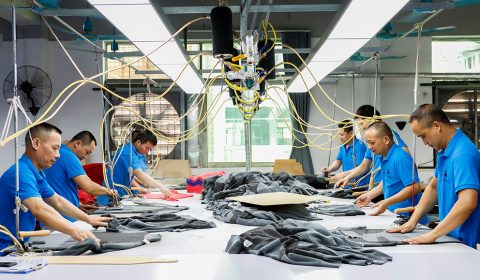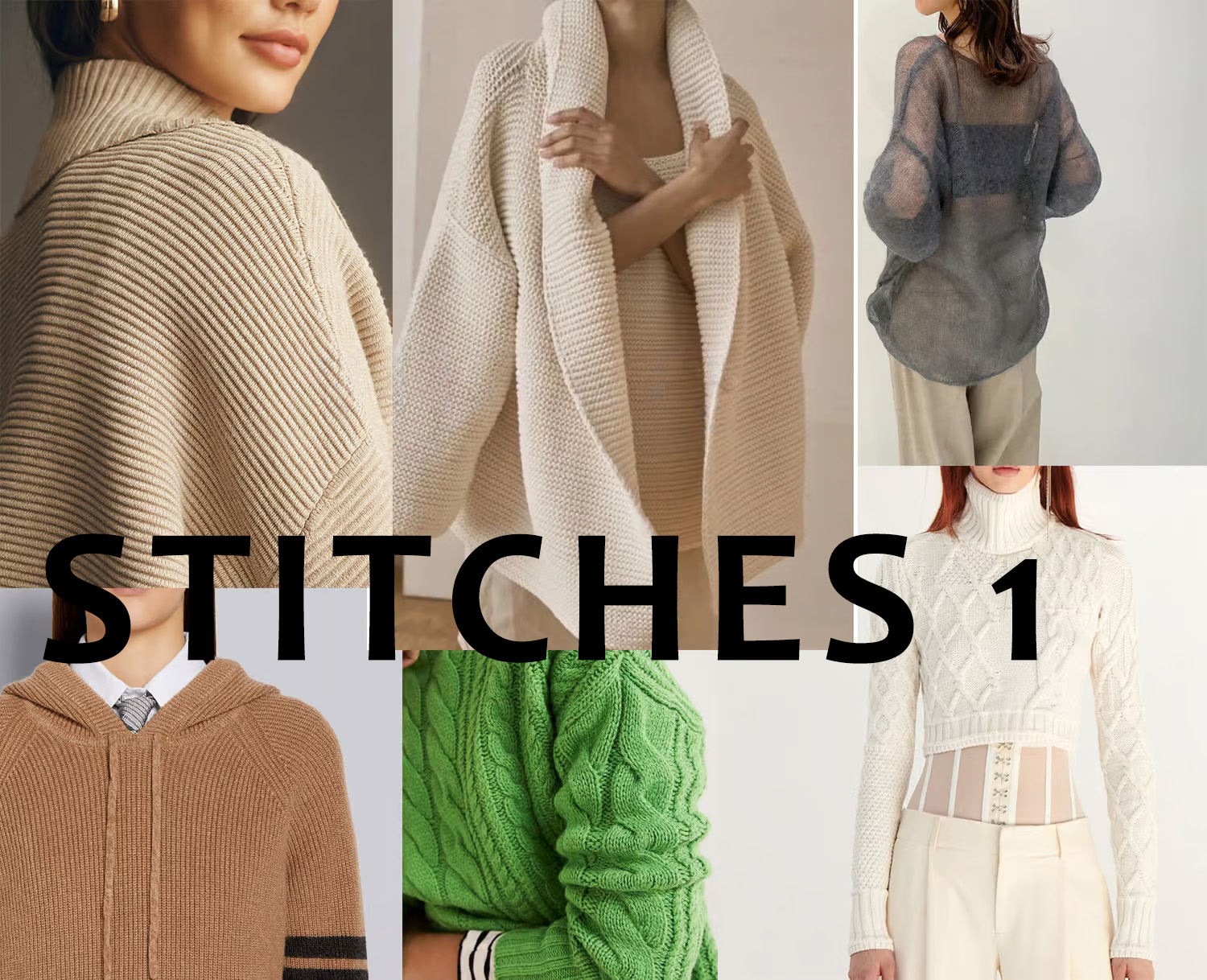As an important category of textiles, knitwear plays an irreplaceable role in fashion, functionality and sustainability. First of all, from a fashion point of view, knitwear has a wealth of design possibilities and can present a variety of fashion in a variety of different textures, patterns and colors. Whether it is an elegant long dress on a high-end fashion show or a comfortable knitwear in casual fashion, knitwear can meet the fashion needs of different consumers. Secondly, in terms of functionality, the characteristics of knitwear make it have excellent comfort and breathability, suitable for a variety of different clothing and uses. For example, knitwear is often used in sportswear, outdoor clothing and healthcare products, and its soft and lightweight characteristics provide users with a more comfortable wearing experience. Furthermore, knitwear is also a concern in terms of sustainability. With the increasing awareness of environmental protection, more and more brands and manufacturers are starting to use sustainable materials to produce knitwear, such as organic cotton and recycled fibers. The application of these materials not only reduces the consumption of natural resources, but also reduces the negative impact on the environment, thus driving the entire industry towards a more sustainable direction.
The future development direction of knitwear
The future market demand for knitwear will be largely influenced by fashion trends, consumer preferences and lifestyles. With the continuous development and progress of society, consumers’ demand for clothing is no longer limited to the simple wearing function, but pays more attention to the individuation, quality and functionality of clothing. Therefore, the future knitwear market will pay more attention to design innovation and quality improvement.
Changes in fashion trends will directly affect the design and production of knitwear. In the future, with the diversification of society and cultural exchanges, fashion styles will be more diversified and personalized. This means that designers need to be more flexible in responding to different fashion trends, constantly innovating, and providing consumers with a richer variety of choices. At the same time, with the acceleration of people’s pace of life, the future knitwear design may pay more attention to comfort and convenience to adapt to the fast-paced lifestyle of consumers.
Changes in consumer preferences will also have a profound impact on the future of the knitwear market. With the improvement of consumers’ awareness of quality and environmental protection, they will be more inclined to choose high-quality and environmentally friendly knitwear products. Therefore, the future knitwear market will focus more on quality and sustainability. Products with good quality and environmental protection characteristics will be favored by consumers and become the mainstream of the market.
In addition, changes in lifestyle will also affect the future demand of the knitwear market. With the improvement of people’s living standards and the diversification of lifestyle, their demand for clothing will also change. In the future, knitwear is not only a simple piece of clothing, but also an important way for people to show their personality and attitude towards life. Therefore, the future knitwear market will pay more attention to individuation and differentiation, and provide consumers with more diversified choices.
Trends in sustainability and environmental protection of knitwear
With the increasing awareness of environmental protection, sustainability and environmental protection have become an important trend in the development of the knitwear industry. In the future, the knitwear industry will pay more attention to sustainable development, using environmentally friendly materials and production processes to reduce the impact on the environment.
Degradable fiber will become one of the important development directions of the future knitwear industry. With the continuous advancement of degradable fiber technology, such as bio-based fiber, protein fiber, etc., the future of knitwear will be more environmentally friendly and sustainable. These degradable fibers not only have excellent comfort and durability, but also can decompose quickly after use, reducing pollution to the environment.
On the other hand, the application of recycled materials will also become an important trend in the future knitwear industry. In the future, with the continuous development of recycling technology, more and more waste textiles will be effectively used and converted into new knitwear raw materials. This not only helps to reduce the waste of resources, but also reduces production costs and improves the sustainability of knitwear.
To sum up, the future knitwear industry will continue to meet new challenges and opportunities under the influence of fashion trends, consumer preferences and lifestyles. At the same time, the knitwear industry will also pay more attention to sustainable development, the use of environmentally friendly materials and production processes, to provide consumers with more high-quality, environmentally friendly products.
The application of new materials
With the progress of science and technology and the improvement of technology, new fiber materials have been widely concerned and applied in the textile industry. Among them, nanofibers and biodegradable fibers are two eye-catching development directions.
– Nanofibers
Nanofibers are microfibers with a diameter of nanometer, which have high specific surface area and excellent mechanical properties. This material can be prepared by advanced processes such as electrospinning and solution rotation. In knitwear manufacturing, nanofibers can be used to produce lightweight, soft and high-strength fabrics. Due to its microfiber structural characteristics, nanofiber fabrics have excellent air permeability and comfort, which is suitable for the production of sportswear, underwear and other products requiring a high degree of comfort.
– Biodegradable fiber
Biodegradable fibers are a class of fiber materials that can be degraded by microorganisms in the natural environment, usually made from natural biopolymers or renewable resources. In the manufacture of knitwear, biodegradable fibers can be used to produce environmentally friendly textiles, such as reusable bags and degradable underwear. The application of this material helps to reduce the negative impact on the environment and improve the sustainability of the product, in line with the modern consumer’s pursuit of environmentally friendly products.
The application of new materials has brought many advantages to knitwear design, including lightweight, breathability, antibacterial properties, etc., which have a positive impact on design innovation.
– Lightweight
The application of new fiber materials makes the knitwear lighter, reduces the wearer’s burden and increases the wearing comfort. Lightweight knitwear is suitable for various occasions, such as outdoor activities, sports, travel, etc., bringing more possibilities to the design, promoting the integration of functionality and fashion.
– Breathability
The breathability of the new material makes the knitwear have good air permeability and moisture discharge, which helps to improve the comfort and health of the wearer. Excellent breathable knitwear is suitable for hot summer climates or sports wear, by effectively sweating and maintaining ventilation, reduce the wearer’s discomfort, enhance the use value of the product.
– Antibacterial
Some of the new materials have antibacterial and odor-resistant properties, which can effectively inhibit the growth and reproduction of bacteria and keep the knitwear clean and hygienic. The antibacterial performance of the knitwear is suitable for long-term wear or easy to produce odor occasions, such as sportswear, underwear, etc., to improve the quality and service life of the product.
In summary, the application of new materials provides a broader space and richer possibilities for knitwear design, and brings higher innovation and competitiveness to the design by optimizing material characteristics and properties, which promotes the development of the knitwear industry.




 English
English Deutsch
Deutsch Français
Français Italiano
Italiano Español
Español Русский
Русский Polski
Polski Nederlands
Nederlands Svenska
Svenska

